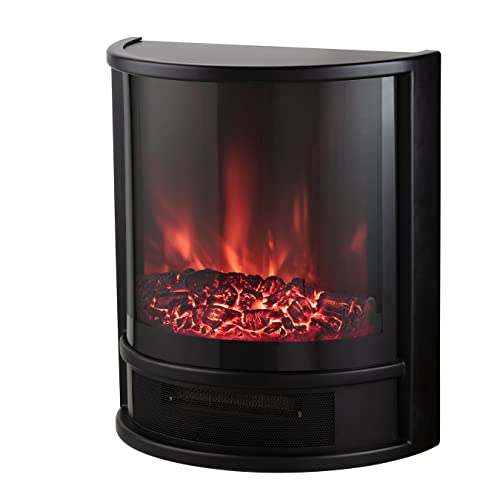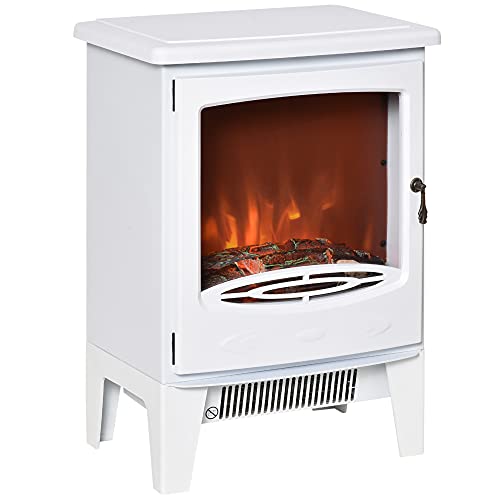10 Of The Top Facebook Pages Of All-Time About Fireplace
페이지 정보
작성자 Gordon Skurrie 작성일24-12-18 20:13 조회6회 댓글0건관련링크
본문
 What Are Fireplace Accessories?
What Are Fireplace Accessories? Fireplaces are central to many homes they provide warmth and comfort throughout the day and at night. They also enhance the value and appeal of the interior of your home.
Fireplaces are central to many homes they provide warmth and comfort throughout the day and at night. They also enhance the value and appeal of the interior of your home.Whether your fireplace needs an overhaul or minor repairs, these tasks can be done by homeowners. However, certain tasks that require gas service must be left to skilled professionals.
The Hearth
The hearth is a noncombustible surface that surrounds the fireplace or wood-burning stove. It could be a raised area or just the foundation of the Tabletop fireplace. The word "hearth" is often used to describe the entire area of the fireplace, which includes the firebox, raised mantel and floor, as well as the chimney. It is essential to keep in mind that there are specific fire safety regulations regarding the construction of the fireplace as well as its accessories. You should consult your local authority for further information.
They can be made of stone, bricks or cement. They are a great focal point for any room. They are designed to guard against accidental electric fires that could be caused by stray embers or even logs. They also offer a place to store fireplace tools as well as wood and other materials.
Archaeological studies have revealed that hearths were important to early human life. Many believe that hearths were the source of food, light, warmth, and protection.
A hearth could cause serious health problems when it isn't maintained properly. Smoke inhalation increases the levels of nitrogen in blood which blocks red blood cells from delivering oxygen to tissues (methemoglobinemia). In high doses it can cause dizziness, nausea and loss of consciousness.
Traditionally, hearths were built out of rock, however they are nowadays constructed out of brick or concrete and can be in different sizes and shapes. Some cooking fireplaces shop feature hearths that are able to cover the entire wall fireplace while others are smaller and purely decorative elements that only cover the fireplace's opening. The material of a hearth can significantly affect its appearance, cost and resistance.
The Surround
A fireplace surround, also referred to as a "mantel" is the frame over the hearth that enhances the ambiance of a room. Apart from its aesthetic value, it also serves as a practical element as it keeps combustible substances away from the fireplace and reflects heat into the room. It also serves as an extra shelf for household items like mirrors or paintings.
Depending on the type of fireplace, there are several materials that can be used for the surround. Certain materials are non-combustible, while others must be in compliance with national and local fire codes regarding clearance distances from combustible objects.
Some of the most popular choices for the surround are concrete, brick, and stone. Certain stone surrounds are carved with decorative features, such as bevels and bolection moulding. They may also feature plinths or cornices. These features can give an elegant look that can complement the style of the home.
Another option is plaster. It is made with a mixture of sand and cement, and it is then finished to match any style of architecture. For example, a plaster surround can be a perfect fit for a Mission-style house.
The last popular choice for an interior fireplace surround is tile. It is available in a wide variety of patterns and colors. It can be used as an accent to the surround or spread over the whole wall for an impressive focal point. Tile is also a good option for homes with modern or contemporary style.
The surround is one of the first things guests notice upon entering a space. This is why it is important to choose the right piece that will set the tone of your room and increase your home's value.
The Firebox
The firebox is the space behind a fireplace's opening where the fire can be created and maintained. It is usually surrounded by some type of chimney that allows the smoke to escape through. Usually, these traditional structures burn wood, but some also burn gas like propane or natural gas.
No matter what kind of fuel you are using, the firebox is where the combustion takes place and must be maintained for safety and efficiency. The firebox is comprised of several important components. They include the grate and the fire poker and the air damper.
In addition to maintaining the firebox and its interior in good condition, it's important to clean your fireplace regularly. Because it is constantly exposed to extreme temperatures, the inside of the fireplace will be matted with soot and ash that need to be cleaned out. You can use a scraper or a wirebrush to clean the soot and ash that has been clogged up.
It's also a great idea to use steel slag or stainless steel to line the inside of the firebox to ensure durability and long-term use. These metals are resistant to corrosion and won't get rusty. They also offer more even heat distribution and will last longer.
You can also enhance the visual appeal of your fireplace by adding decorative electric fire logs and lava stones. Some people opt for modern-looking decorative glass instead. Be certain that whatever you're using in your fireplace is UL rated for safety. This includes the fireplace as well as any other accessories and decorations you'll add to it.
The Burner
Burners are a popular way to add heat and aesthetics to any space. These fireplace accessories are available in a variety of shapes and sizes that make it easy to locate the perfect burner for your home. Some are equipped with remotes so that you can control flames from any location in the home. Fire-burners can be used indoors as well as outdoors, as they are safe.
There are a variety of burners, each with its own advantages and disadvantages. Some are more expensive than others, however they all provide a variety advantages for your home. Some are safer than other models, and some can be used with chimneys or without. No matter what kind of burner you pick, always follow the instructions provided in the manual. This will ensure that the burner is properly installed and in compliance with all state and local laws.
Wood burning is a classic way to enjoy your fireplace, however it's not always the most convenient. The smoke and soot created by burning wood can be dangerous to you and your family. Ethanol fire burners are on the other hand, produce only CO2 and water vapor - which is much more environmentally friendly.
A fireplace can also be beneficial in the occasion of an outage. In winter, heavy snow and ice can build up on trees, which may cause them to fall, and even knock down power lines hanging from the ceiling. fireplaces shop can be used to cook and keep warm if the electricity is out in your home. This is an important benefit for those who want to be prepared for the unexpected.
The flu
The flue is a tunnel inside a chimney which carries gases and smoke out of the house. It's also a crucial element of a safe and effective fire. A flue creates an updraft that draws air through the fire, allowing fuel to burn fully and reducing smoke.
The flue's draft stops the hot gases that are produced by the fire from flowing into your home. Instead, they are carried out to cool. This regulated venting is what prevents carbon monoxide.
Your chimney must be regularly inspected for leaks and blockages. The flue pipe is a stainless steel tube or duct that runs through the center of the chimney, should be cleaned using specific cleaning chemicals and equipment. This includes a brush made of metal and a drill with a masonry bit, as well as masking tape and an utility knife to remove any soot or creosote that is stuck to the walls of the flue pipe.
Close the flue when not using your fireplace to prevent the conditioned air from escape. It also stops winds or rain from getting into the chimney and damaging your fireplace wood stove, or gas furnace.
The damper can be closed and opened by using a latch or a handle. It is located on the top of your fireplace, near the flue pipe or tile. The damper is designed to keep a fireplace's flue open while there is a fire burning. However it should be closed when the fireplace is not in use. This can help you save energy costs.
댓글목록
등록된 댓글이 없습니다.
